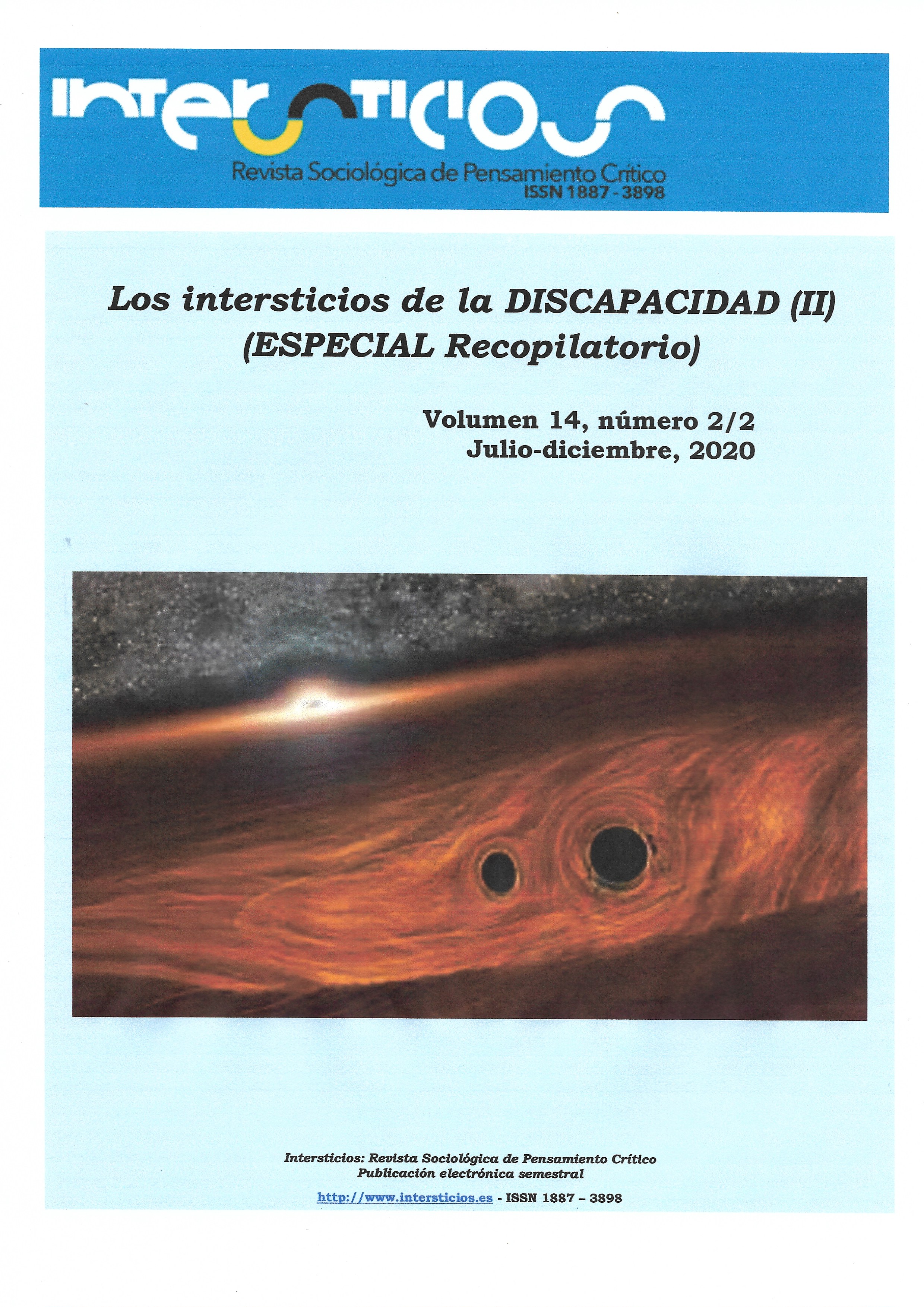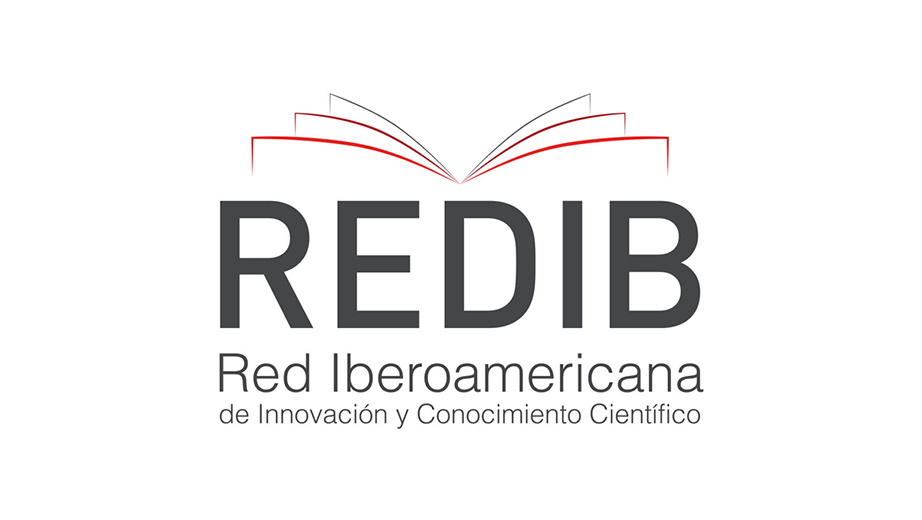The social model analysis of disability and the majority world
Palabras clave:
Disability, models, globalizationResumen
There is a strong controversy of how disability should be understood and if the models suggested in the minority world can or should be used in other places. Is the social model as relevant to the disabled people in the majority world as it is to disabled people in the minority world? It is exactly part of this controversy that we will try to examine in this paper. This article will begin by defining key concepts relevant to the discussion and following that it will address issues and questions raised by critics of the social model and some answers to them. First, we will examine whether the dominance of the minority world has resulted in a “colonization” of ideas and practices on the majority world (including the social model approach). Secondly, reference will be made to the social model of disabil-ity, and whether it is or is not ignoring what impairment means for disabled peo-ple in the majority world. Thirdly, an analysis of whether it is relevant to apply the social model of disability in the majority world; is the issue of poverty forgot-ten? Is survival a first priority for disabled persons in some places? A brief analy-sis of the links between poverty, impairment and disability will be presented.Citas
Barnes, C. (1996): ” The social model of disability: Myths and Misconceptions” in Greater Manchester Coalition of Disabled People’s Journal ‘Coalition’ August 1996: pp 27-33
Barnes, C. (2009): “Disability in a Majority World Context: A materialist ac-count.” (Available at: http://www.disability-archive.leeds.ac.uk/).
Baylies, C. (2002): “Disability and the Notion of Human Development: Ques-tions of rights and capabilities”, Disability & Society, 17 (7): 725-739.
Buckingham, J. (2011): “Writhing histories of disability in India: Strategies of inclusion”, Disability & Society, 26 (4): 419-431
Finkelstein, V. (1996): “Modelling disability”. (Available at: http://www.disability-archive.leeds.ac.uk/).
Finkelstein, V. (1999): “Professions Allied to the Community (PACs)”. (Available at: http://www.disability-archive.leeds.ac.uk/).
Finkelstein, V. (2007): “The ‘Social Model of Disability’ and the Disability Movement.” (Available at: http://www.disability-archive.leeds.ac.uk/).
Flood, T. (2005): “‘Food’ or ‘Thought’. The social model and the majority world”. Barnes, C. and Mercer, G. (eds): “ The Social Model of Disability: Europe and the Majority World, Leeds: The Disability Press, pp 180-192.
Ghai, A. (2001): “Marginalisation and disability: experiences from the third world.” In M. Priestley (ed.), Disability and the Life Course, Cambridge: Cambridge Universtiy Press, 26-37.
Hartley, S., Nganwa, A and Kisanji, J. (undated): “ 'Professionals' Particiaption in CBR programmes”. http://www.asksource.info/cbr-book/cbr05.pdf (last accessed: 12.10.2011)
Hurst, R. and Albert, B. (2006): “The social model of disability, human rights and development cooperation” In Albert, B. (eds) In or out of the main-stream?, Leeds: The Disability Press, pp 24-39.
Kapp, S. (2011): “Navajo and autism: the beauty of harmony”. Disability and society 26 (5): 583-595.
Lang, R (2011). “Community-based rehabilitation and health professional prac-tice: developmental opportunities and challenges in the global North and South.” Disability and Rehabilitation, 2011; 33(2): 165-173.
Meekosha, H. (2011): “Decolonizing disability: thinking and acting globally”. Disability & Society, 26(6): 667-682.
Miles, M. (1996) “Community, individual or informational development? Di-lemmas concept and culture in South Asian disability planning”. Disability & Society 11(4): 485-500
Miles, M. (2003) “CBR works best the way local people see it and build it”. Asia Pacific Disability Rehabilitation Journal 14(1): 86-98
Morris, J. (1991). Pride Against Prejudice, London: The Woman Press.
Oliver, M. (1990): The Politics of Disablement, Basingstoke: Macmillan
Oliver, M. (1996): “Defining Impairment and disability: issues at stake”, in Barnes, C. & Mercer, G (eds), Exploring the Divide: Illness and Disability, Leeds: The disability Press.
Populin, E. (2005): “Disability and Rehabilitation: reflections on working for the World Health Organization.” Barnes, C. and Mercer, G (eds) 2005: The So-cial Model of Disability: Europe and the Majority World. Leeds: The disabil-ity Press, pp 193-209.
Riger S. (1993): “What’s wrong with empowerment?”. American Journal of Community Psychology 1993; 21: 279-292.
Shakespeare, T. (2002): “The social model of disability: an outdated ideology?”. Research in Social Science and Disability. Vol 2:9-28
Sheldon, A. (2005): “One World, One People, One struggle? Towards the global implementation of the social model of disability.” Barnes, C. and Mercer, G. (eds): The Social Model of Disability: Europe and the Majority World, Leeds: The Disability Press, pp 115-130.
Sheldon, A. (2010). “Locating disability in the majority world: geography or pov-erty?” from a paper presented at the “Disability and the majority world: challenging dominant epistemologies’ conference, Manchester Metropolitan University, July 9th 2010.
Stone, E. (1999): “Disability and development in the majority world.” In E. Stone (ed.), Disability and development: Learning from action and research on disability in the majority world, Leeds: The Disability Press, 1-20.
Thomas, F. (2005): “Disability, poverty and the Millennium Development Goals: Relevance, Challenges and Opportunities for DFID”. Disability Kar, Availa-ble at: http://www.disabilitykar.net/research/policy_DFID.html
Werner, D. (1998): “Nothing about us, without us: Developing innovative tech-nologies for, by and with disabled people”. Palo alto, Health Wrights. http://www.dinf.ne.jp/doc/english/global/david/dwe001/dwe00102.html#introduction1 (last acces. 21.11.2011)
Yeo, R. (2005): “Disability, Poverty and the ‘new’ development agenda.” A Re-port to the KaR Programme. (Available at: http://www.disability-archive.leeds.ac.uk/).
Barnes, C. (2009): “Disability in a Majority World Context: A materialist ac-count.” (Available at: http://www.disability-archive.leeds.ac.uk/).
Baylies, C. (2002): “Disability and the Notion of Human Development: Ques-tions of rights and capabilities”, Disability & Society, 17 (7): 725-739.
Buckingham, J. (2011): “Writhing histories of disability in India: Strategies of inclusion”, Disability & Society, 26 (4): 419-431
Finkelstein, V. (1996): “Modelling disability”. (Available at: http://www.disability-archive.leeds.ac.uk/).
Finkelstein, V. (1999): “Professions Allied to the Community (PACs)”. (Available at: http://www.disability-archive.leeds.ac.uk/).
Finkelstein, V. (2007): “The ‘Social Model of Disability’ and the Disability Movement.” (Available at: http://www.disability-archive.leeds.ac.uk/).
Flood, T. (2005): “‘Food’ or ‘Thought’. The social model and the majority world”. Barnes, C. and Mercer, G. (eds): “ The Social Model of Disability: Europe and the Majority World, Leeds: The Disability Press, pp 180-192.
Ghai, A. (2001): “Marginalisation and disability: experiences from the third world.” In M. Priestley (ed.), Disability and the Life Course, Cambridge: Cambridge Universtiy Press, 26-37.
Hartley, S., Nganwa, A and Kisanji, J. (undated): “ 'Professionals' Particiaption in CBR programmes”. http://www.asksource.info/cbr-book/cbr05.pdf (last accessed: 12.10.2011)
Hurst, R. and Albert, B. (2006): “The social model of disability, human rights and development cooperation” In Albert, B. (eds) In or out of the main-stream?, Leeds: The Disability Press, pp 24-39.
Kapp, S. (2011): “Navajo and autism: the beauty of harmony”. Disability and society 26 (5): 583-595.
Lang, R (2011). “Community-based rehabilitation and health professional prac-tice: developmental opportunities and challenges in the global North and South.” Disability and Rehabilitation, 2011; 33(2): 165-173.
Meekosha, H. (2011): “Decolonizing disability: thinking and acting globally”. Disability & Society, 26(6): 667-682.
Miles, M. (1996) “Community, individual or informational development? Di-lemmas concept and culture in South Asian disability planning”. Disability & Society 11(4): 485-500
Miles, M. (2003) “CBR works best the way local people see it and build it”. Asia Pacific Disability Rehabilitation Journal 14(1): 86-98
Morris, J. (1991). Pride Against Prejudice, London: The Woman Press.
Oliver, M. (1990): The Politics of Disablement, Basingstoke: Macmillan
Oliver, M. (1996): “Defining Impairment and disability: issues at stake”, in Barnes, C. & Mercer, G (eds), Exploring the Divide: Illness and Disability, Leeds: The disability Press.
Populin, E. (2005): “Disability and Rehabilitation: reflections on working for the World Health Organization.” Barnes, C. and Mercer, G (eds) 2005: The So-cial Model of Disability: Europe and the Majority World. Leeds: The disabil-ity Press, pp 193-209.
Riger S. (1993): “What’s wrong with empowerment?”. American Journal of Community Psychology 1993; 21: 279-292.
Shakespeare, T. (2002): “The social model of disability: an outdated ideology?”. Research in Social Science and Disability. Vol 2:9-28
Sheldon, A. (2005): “One World, One People, One struggle? Towards the global implementation of the social model of disability.” Barnes, C. and Mercer, G. (eds): The Social Model of Disability: Europe and the Majority World, Leeds: The Disability Press, pp 115-130.
Sheldon, A. (2010). “Locating disability in the majority world: geography or pov-erty?” from a paper presented at the “Disability and the majority world: challenging dominant epistemologies’ conference, Manchester Metropolitan University, July 9th 2010.
Stone, E. (1999): “Disability and development in the majority world.” In E. Stone (ed.), Disability and development: Learning from action and research on disability in the majority world, Leeds: The Disability Press, 1-20.
Thomas, F. (2005): “Disability, poverty and the Millennium Development Goals: Relevance, Challenges and Opportunities for DFID”. Disability Kar, Availa-ble at: http://www.disabilitykar.net/research/policy_DFID.html
Werner, D. (1998): “Nothing about us, without us: Developing innovative tech-nologies for, by and with disabled people”. Palo alto, Health Wrights. http://www.dinf.ne.jp/doc/english/global/david/dwe001/dwe00102.html#introduction1 (last acces. 21.11.2011)
Yeo, R. (2005): “Disability, Poverty and the ‘new’ development agenda.” A Re-port to the KaR Programme. (Available at: http://www.disability-archive.leeds.ac.uk/).
Descargas
Publicado
2020-08-19
Número
Sección
MONOGRÁFICO
Licencia
Los/as autores/as mantienen el @copyright, concediendo a la revista el derecho de primera publicación.








